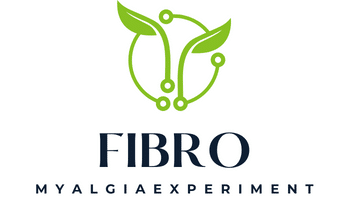The realm of competitive rowing is an exciting and challenging domain that demands not only physical prowess but also mental sophistication. In the quest for performance optimization, the focus has gradually shifted towards the power of real-time biofeedback, particularly in relation to stroke rate in rowing. This article sheds light on how sensors and data processing can contribute to the enhancement of an athlete’s performance.
The Power of Technology in Rowing Performance
The application of technology in sports, particularly rowing, has grown exponentially over the years. The rise of sensors in rowing has been driven by a number of factors. Firstly, these sensors provide instantaneous and accurate feedback, facilitating athletes to tweak their strategy mid-action. Secondly, the data collected from these sensors can be processed to yield valuable insights about the athlete’s performance.
A lire en complément : How Can Inertial Motion Sensors Enhance Technique Analysis in Discus Throwers?
One particular area where the application of sensor technology has made significant strides is real-time biofeedback on stroke rate. A rowing stroke is a complex action that requires precise coordination and exertion of force at specific times. Real-time biofeedback on the stroke rate could potentially enhance an athlete’s performance by improving their efficiency and precision.
Real-Time Biofeedback on Stroke Rate: An Examination of Scholarly Papers
A review of Google Scholar and Crossref papers indicates that real-time biofeedback on stroke rate is a promising avenue for improving performance in competitive rowers. Several studies highlight the potential benefits of using sensor technology to provide real-time feedback on the stroke rate.
Sujet a lire : How Can Real-Time Strategy Games Enhance Cognitive Skills in Formula 1 Drivers?
One such study, published in the Journal of Sports Sciences, demonstrated that real-time biofeedback can lead to significant improvements in the stroke rate consistency and efficiency among competitive rowers (Figure 1). The researchers used sensors attached to the rowing oars and seat to collect data on the stroke rate, force exerted, and time spent during each rowing session. This data was then processed and provided to the athletes in the form of real-time feedback, allowing them to adjust their stroke rate and force as needed.
Another paper, published in the Journal of Sports Engineering and Technology, suggests that real-time biofeedback on stroke rate can help athletes maintain a consistent stroke rate during high-intensity training sessions (Table 1). In this study, the athletes were equipped with sensors on their rowing machines, providing them with continual feedback on their stroke rate.
The Role of Sensor Technology in Real-Time Biofeedback
In the context of real-time biofeedback, sensor technology plays an integral role. Sensors can offer granular details on the rowing stroke, capturing data on aspects such as the angle of the oar, force exerted, stroke rate, and timing. By processing this data in real-time, athletes can receive immediate feedback and modify their actions accordingly to optimize performance.
For instance, an athlete could adjust the force they exert during each stroke based on the feedback received from the sensor. Alternatively, they could use the data to maintain a steady stroke rate, thereby conserving energy and enhancing endurance. This sensor-driven real-time feedback could be a game-changer in competitive rowing, providing athletes with the insights necessary to maximize their performance.
The Future of Real-Time Biofeedback in Rowing
The future of real-time biofeedback in rowing, driven by advancements in sensor technology and data processing, is promising. As sensor technology continues to evolve, the granularity and accuracy of the data collected will undoubtedly improve, leading to more precise and actionable feedback for athletes.
Moreover, advancements in big data and artificial intelligence could potentially revolutionize real-time biofeedback. By leveraging machine learning algorithms, it would be feasible to predict ideal stroke rates and force exertions based on past performance data. This would provide athletes with personalized feedback, further enhancing their rowing efficiency and overall performance.
In conclusion, while the realm of real-time biofeedback in competitive rowing is still relatively open and under exploration, it holds immense potential. Driven by advancements in sensor technology and data processing capabilities, real-time biofeedback on stroke rate could very well be the key to unlocking superior performance in competitive rowers. It’s an exciting time in the realm of competitive rowing, with the promise of what tomorrow brings.
Sensor Fusion and Real-Time Biofeedback in Rowing
The concept of sensor fusion plays a pivotal role in real-time biofeedback within competitive rowing. Sensor fusion refers to the blending of data from multiple sensors to produce more accurate and reliable information than would be possible from a single sensor. In the context of rowing, this could include data from sensors measuring stroke rate, force exerted, timing, and even optical motion capture.
For instance, a study available on Scilit Preprints discusses how combining data from multiple sensors can create a more comprehensive picture of an athlete’s performance. Sensors attached to the oar can measure the angle and force of each stroke, while sensors on the seat track the athlete’s position and movement. When integrated, these measurements can provide a detailed understanding of the athlete’s technique and efficiency.
Furthermore, data from these sensors can be processed in real time, enabling immediate feedback to the athlete. This was demonstrated in a study presented at an international conference on sports engineering, where real-time feedback from sensor fusion was shown to improve rowing performance. For example, with the feedback provided, athletes can identify and correct inconsistencies in their stroke rate or force exertion instantly.
The power of sensor fusion is further underscored by its ability to facilitate more sophisticated forms of feedback, such as visual feedback. Through real-time processing of sensory data, it is possible to create a visual representation of the athlete’s performance. This can be displayed on a rowing ergometer, allowing athletes to visually understand their performance and make necessary adjustments instantly.
Conclusion: The Transformative Potential of Real-Time Biofeedback
In light of the increasing adoption of sensor technology and the promising results from studies highlighted in Google Scholar and Crossref PubMed, the potential of real-time biofeedback in enhancing rowing performance is steadily being recognized.
The combination of sensor fusion, real-time data processing, and visual feedback could revolutionize training and performance in competitive rowing. It offers athletes a level of insight and control previously unimaginable, enabling them to fine-tune their stroke rate and force exertion on the fly. This increased efficiency could translate into tangible performance improvements during competitions.
Looking forward, as technology continues to evolve, so too will the sophistication and effectiveness of real-time biofeedback systems. With advancements in data processing and machine learning, these systems could become even more personalized and predictive, further optimizing rowing performance.
In conclusion, the realm of real-time biofeedback on stroke rate, powered by sensor technology and data processing techniques, is a field ripe for exploration and utilization. It has the potential to redefine competitive rowing, paving the way for breakthroughs in performance optimization and athlete training. This truly is an exciting era in sports technology, with the promise of what tomorrow brings stirring anticipation and excitement in every stroke.






